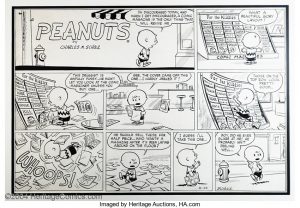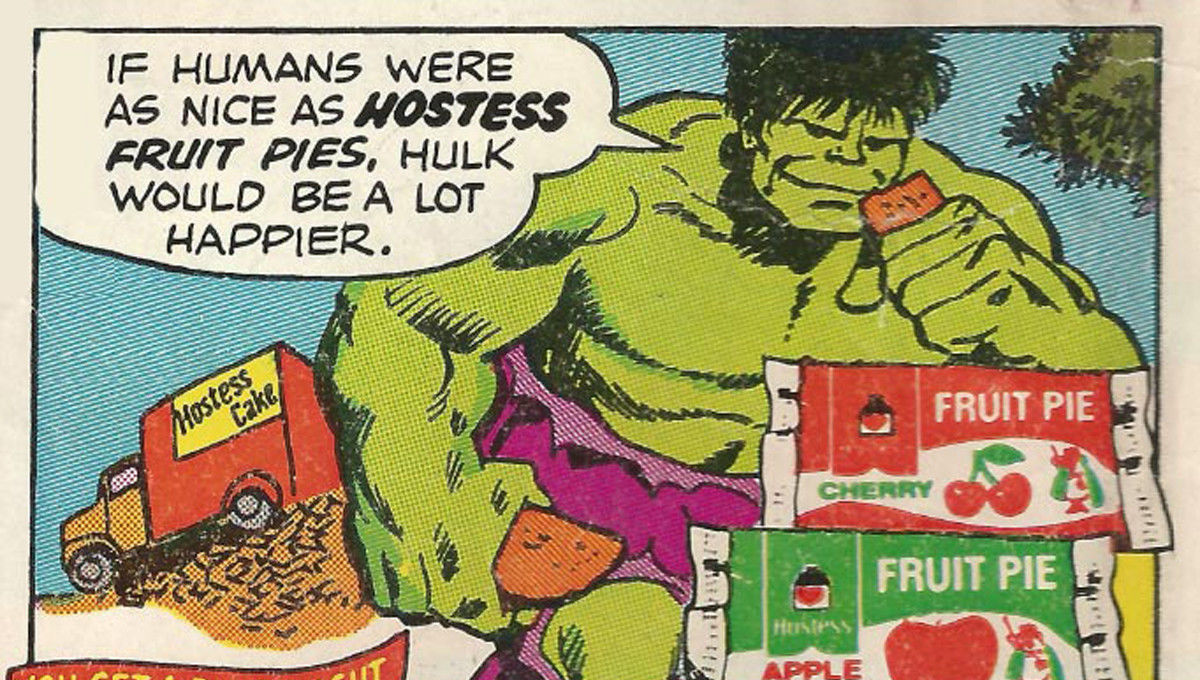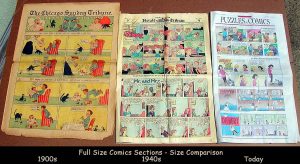
Today’s people, looking at the tiny comic strips as printed in newspapers now, might find it hard to understand the tremendous popularity of comic strips circa 1900. Remember that this was before television, before radio, even before movies. In the day when there were four to seven competing newspapers in a city, strips were not only popular, but often the big draw to one over another. The comics were printed three-four times the size they are printed today. People discussed the strips the way the latest cable shows are talked over now. The strips started national crazes, slang and songs. And popular strip creators were wooed away from their newspaper not unlike free agent athletes today.
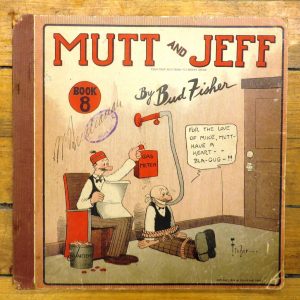
But despite the popularity, the strips were here today, gone tomorrow. There was little thought given to reprinting, much less preserving the strips. There were some promotional booklets published, and occasionally a hardcover, but no one realized there might be a market for reprints until the mid-1930s, and MC Gaines.
Max Gaines (father of EC and Mad’s William) put together promotional books of comic strips for manufacturers to give away as premiums. He had proposed a nickel book idea to a company which passed on it. In 1933 he found he had a stack of giveaways left over. On a whim he put ten cent stickers on them, and left copies at a couple newsstands on his way home. In the morning they were all gone.
Newspaper printers were always looking for ideas that would keep the presses rolling, and Max Gaines’ idea was just what they needed. Gaines collaborated with Dell to publish the 36-page one-shot Famous Funnies: A Carnival of Comics, followed in 1934 by Famous Funnies, which ran for 218 issues and is considered the first true American comic book.
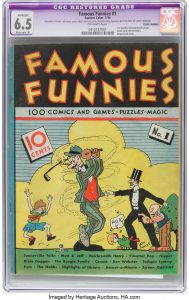
It didn’t take long for competitors to leap into the business, and pre-existing strips were used up at a fast rate. Companies started interspersing new material in their contents, but New Fun Comics #1 is believed to be the first all new publication, DCs first comic.
The new material was created by artists hoping to move up to the big time-their own comic strip (the creator of Mutt & Jeff in the early 1900s was the first millionaire cartoonist). Most the features were rip-offs of successful strips. But when DC was looking for a feature for their new comic, Action Comics, they remembered a crudely drawn comic strip sample that had been submitted to them, and was languishing in a draw. Repasted into the comic page format, Superman led off the issue. It took the publishers a while to realize that he was why the issue was selling. Their competitors realized it, also, and the boom was on. World War II contributed to the boom, as comics were easy for soldiers to read and put down.
Before comic stores, the books were sold in drug stores and at newsstands, which populated just about every corner on major cross streets. Many comics were bought to shut junior up while the family waited for a bus.
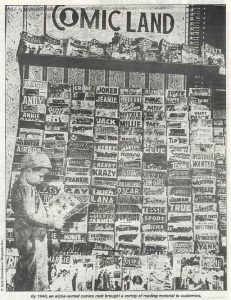
It was the late fifties when kids who read the early comics began to look for older comics in second hand magazine stores which existed on the edges of skid-rows, sometimes paying as much as a quarter or fifty cents for Golden Age books. From those collectors slowly grew an awareness of the back history of comics, which eventually led to stores devoted to comics.
